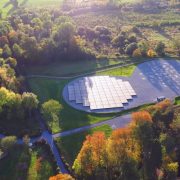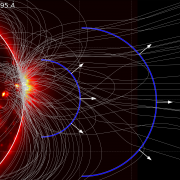LOFAR Solar and Space Weather KSP meeting, Dublin 2020

The LOFAR Solar and Space Weather KSP will hold their next meeting at the Dublin Institute for Advanced Studies (DIAS) from 30th March – 1st April 2020. This meeting will focus on recent scientific results from the KSP as well as a business meeting. We also plan 0.5-1 day informal workshop on the analysis of LOFAR data related to the Parker Solar Probe mission.
Venue
The meeting will be held at the Dublin Institute for Advanced Studies, Burlington Rd., D04 C932. Note there are a few DIAS sites around the city, double check you’ve got the right one when organising transport, hotels etc.
Registration
To register please email eoin.carley@dias.ie by 25th January 2020 with the following info:
- Name:
- Affiliation:
- Talk title (if you wish to give one):
- Dietary restrictions:
- Attending the LOFAR-PSP workshop on day 3 (yes/no?):
Preliminary Schedule
-
Day 1 (Mar 30)
14:00 – 15:30 Welcome and science talks
15:30 – 16:00 Coffee
16:00 – 17:30 Science talks
-
Day 2 (Mar 31)
09:00 – 11:00 Science talks
11:00 – 11:30 Coffee
11:30 – 13:00 Science talks
13:00 – 14:30 Lunch
14:30 – 16:00 Science talks
16:00 – 16:30 Coffee
16:30 – 17:30 KSP business meeting. Agenda TBD.
19:00 – Dinner
-
Day 3 (Apr 1): LOFAR-PSP workshop
09:00 – 11:00 LOFAR-PSP Workshop 1
11:00 – 11:30 Coffee
11:30 – 13:00 LOFAR-PSP Workshop 2
[Meeting end]
Accommodation
There are plenty of hotels located close to DIAS, Burlington Rd. The two closest:
We recommend booking as early as possible.
Getting to DIAS, Burlington Rd.
- A taxi from Dublin Airport to DIAS-Burlington will cost approximately €35.
- By coach, take Aircoach no. 700 at Dublin Airport and get off at Leeson St. Lower (next to the Clayton Hotel), after which DIAS Burlington Rd. is a 3 minute walk.
- Dublin Bus express 747 to O’Connell St., then 38, 38a, 38b or 38d to Burlington Rd.
- From Dublin city centre you can also take the LUAS Green Line (tram) to the Charlemont stop, which is a 10 minute walk from Burlington Rd.



